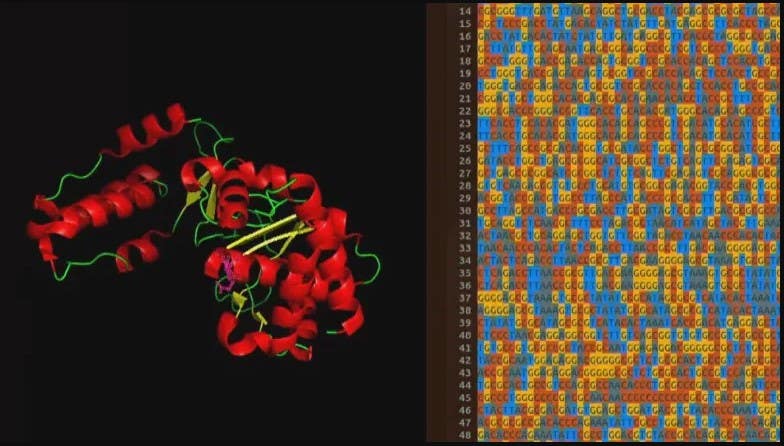Scientists discover 9 new coronaviruses using $24,000 Amazon supercomputer
The Serratus Project is a supercomputing collaboration that analyzed close to 6 million biological samples, or 20 million gigabytes of data.

[Feb 12, 2022: Joshua Shavit, The Brighter Side of News]
The Serratus Project is a supercomputing collaboration that analyzed close to six million biological samples, or 20 million gigabytes of data. The goal is to search for a specific gene in each sample that would indicate the presence of an RNA-based virus. (CREDIT: Artem Babaian)
An international team of scientists using AWS Cloud identified more than 130,000 new RNA viruses, including several new species of coronavirus, in record time—creating a “global viral surveillance system” that could help prevent future pandemics.
Researchers from the Serratus project built a powerful supercomputer on AWS in just eight weeks. The supercomputer searched almost 6 million publicly available biological samples for the presence of RNA viruses in less than two weeks for $24,000—achieving what would have taken a standard computer well over 2,000 years and cost at least 10 times more.
No one has attempted this kind of analysis before, because there is too much data to be analyzed by one computer. According to the scientists, what they achieved using AWS Cloud has essentially changed how bioinformatics is done.
Their research, published this week in the scientific journal Nature, should help doctors make connections faster when dealing with sick patients, improve diagnostic testing and vaccine development, and help policymakers decide where to direct their research and monitoring more effectively.
This dashboard shows the location of the data the Serratus project searched through. (CREDIT: AWS)
Related Stories
RNA viruses are more likely to infect new host species because of their rapid reproduction and evolutionary rates. Diseases caused by RNA viruses include the common cold, influenza, SARS, COVID-19, hepatitis C, Ebola, rabies, polio, and measles.
By identifying new viruses and where they might have originated, scientists hope diseases can be recognized much earlier when they infect people, livestock, crops, and endangered species.
The Serratus project team worked with the Cloud Innovation Centre (CIC) at the University of British Columbia (UBC) in Canada, a public-private collaboration between UBC and AWS, which provided the scientists with access to technology and expertise in cloud computing.
Together, they created an open access website, The Open Virome, to share findings with the global scientific community and accelerate research into RNA viruses.
Crunching the Numbers
Supercomputer built on AWS in 8 weeks
Analyzed samples, collected and shared over 13 years by the global research community, including everything from ice cores to animal dung
Analyzed 1 million sequencing libraries per day for less than a peeny per library
Processed 20 million total gigabytes of data
Team discovered more than 130,000 RNA-based viruses
Identified 9 new coronaviruses
For more science and technology news stories check out our New Innovations section at The Brighter Side of News.
Note: Materials provided above by Amazon Web Services. Content may be edited for style and length.
Like these kind of feel good stories? Get the Brighter Side of News' newsletter.
Tags: #New_Innovations, #Computers, #Coronavirus, #COVID_19, #Research, #Science, #Medical_News, #Technology, #Virus, #The_Brighter_Side_of_News
Joseph Shavit
Head Science News Writer | Communicating Innovation & Discovery
Based in Los Angeles, Joseph Shavit is an accomplished science journalist, head science news writer and co-founder at The Brighter Side of News, where he translates cutting-edge discoveries into compelling stories for a broad audience. With a strong background spanning science, business, product management, media leadership, and entrepreneurship, Joseph brings a unique perspective to science communication. His expertise allows him to uncover the intersection of technological advancements and market potential, shedding light on how groundbreaking research evolves into transformative products and industries.



